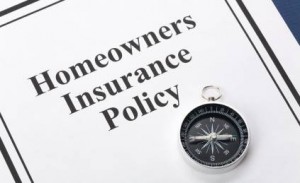Should You Compare Quotes from Various Agents for Home Insurance?
Don’t be fooled by funny commercials and catchy slogans; insurance is quite complicated. Varying levels of coverage, locations and other factors make insurance policies very different from one provider to the next. That is why it is so important to compare various quotes from different insurance agents.
Wild Changes for Multiple Locations
Check out these findings from Bankrate for multiple quotes for various locations
Comparing Insurance Policies | ||
City, State | Number of Quotes | Variation in Highest and Lowest Quote (in %) |
Chicago, IL | 4 | 121 |
Indianapolis, IN | 3 | 56 |
Grand Rapids, Mich. | 3 | 55 |
Columbus, Ohio | 4 | 37 |
Racine, Wis. | 3 | 37 |
Minneapolis | 3 | 18 |
Bankrate used the websites of popular insurance providers to get quotes for various cities. The parameters for the quotes were as follows:
- Single family home
- Full replacement policy
- Value of home $250,000
- Liability policy of $300,000
- A deductible of $500
- Medical coverage of $1,000 for each person
As you can see from the chart in Racine, WI the 3 quotes for the same property varied by 37%. For higher priced areas such as Chicago, IL the quotes differed by as much as 121%.
What Causes the Differences?
Every year the insurance department from each state will approve a set of rates which is based upon the actual losses in the state from prior years as well as anticipated claims for the upcoming year. Each insurance company uses a team of actuaries to look at historical data to come up with a reasonable expectation of insurance claims for the upcoming year and compares that with the company’s financial ability to pay the claims.
Each insurance company has their own standards and guidelines for assigning rates. One company may place a higher weight on the costs to build in a particular neighborhood while a second insurance company would place more emphasis on the rate of crime and possibility for a natural disaster. This is one reason why it is so important to thoroughly investigate a new neighborhood and understand the area’s history before buying a home.
Rash of Disasters Take Their Toll
The disasters from that past few years all over the country have resulted in higher insurance in multiple areas. Tornadoes in Missouri, flooding in Tennessee and hurricanes along the northeast have left a wake of millions of dollars of damaged buildings, automobiles and personal belongings.
All of these events, and many similar disasters, have driven up the cost of homeowner’s insurance. Along with these natural problems there is also the issue of higher costs to build a home after it is totaled and the decreased investment returns that insurance companies have experienced with the sluggish economy.
Before getting a policy with an insurance agent make sure all of your bases are covered. You will obviously need a policy that will take care of your home and your mortgage loan if the property is completely destroyed. You also need to take an inventory of your belongings to make sure they are protected in the case of burglary, fire or other event. Some people have collections of valuable items such as art, jewelry and firearms. Losing these items can be disastrous, especially if the insurance policy is not adequate for the loss.

